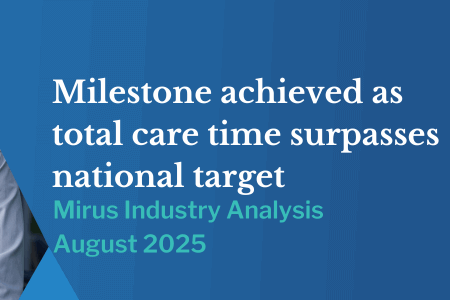The risks of losing your best people in aged care
August 26, 2025 | Guest Bloggers at Mirus

By guest blogger Victoria Mills, CEO & Founder of Hello Coach
In aged care, people are the heart of the service. Facilities can have state-of-the-art buildings, advanced medical equipment, and detailed care plans but it’s the dedication, skill, and compassion of staff that truly determine the quality of life for residents. When organisations fail to look after their best people, the ripple effects extend far beyond workforce numbers- they touch resident wellbeing, staff morale, operational costs, and the organisation’s reputation.
1. Decline in quality of care
Experienced carers and nurses hold not just technical skills, but deep knowledge of residents’ preferences, behaviours, and medical histories. This familiarity enables faster response to changes in health, subtle early interventions, and a personalised approach that new staff cannot immediately replicate. Losing these team members disrupts continuity of care, leading to mistakes, missed warning signs, and a less personal experience for residents
2. Lower staff morale and engagement
When high performers leave, remaining staff often feel overworked and undervalued. They may question their own future in the organisation, leading to disengagement or further resignations. This creates a cycle of turnover that erodes trust, team cohesion, and overall morale. In aged care, where emotional resilience is already tested daily, low morale can lead to compassion fatigue, reduced empathy, and burnout.
3. Increased costs and operational disruption
Replacing skilled aged care workers is expensive and time-consuming. Recruitment costs, onboarding programs, and temporary staffing quickly add up, often stretching already tight budgets. New staff also take time to reach full productivity, requiring supervision and additional training from an already stretched team. During these transitions, workloads increase for remaining staff, creating more pressure and a greater risk of errors.
4. Reputational damage
Families and residents notice when familiar, trusted faces disappear. A revolving door of staff can cause concern about the stability and quality of the service, leading to negative word-of-mouth and potentially impacting occupancy rates. In an industry where trust is everything, reputation is hard to rebuild once damaged.
5. Loss of organisational knowledge and culture
Long-serving staff carry valuable institutional memory practical know-how, unwritten processes, and the cultural values that keep the workplace running smoothly. Losing them means losing insights that can’t be captured in manuals or handovers. Without these cultural anchors, workplaces risk becoming fragmented, transactional, and less connected to their purpose.
6. Greater risk to compliance and safety
Aged care is a highly regulated sector. Experienced staff know how to meet compliance standards and respond to audits with confidence. When these individuals leave, gaps in compliance knowledge can expose the organisation to regulatory breaches, fines, or even sanctions.
The bottom line
Not looking after your best people isn’t just a staffing issue—it’s a risk to the entire aged care service. Retaining skilled, dedicated team members ensures consistent, high-quality care, maintains resident trust, and protects the organisation’s financial and reputational health.
In aged care, investing in staff wellbeing, development, and recognition isn’t optional—it’s an essential safeguard for the people you serve and the sustainability of the service. Quality staff stay when they feel valued, supported, and given room to grow. In a sector where emotional demands are high, retention depends on human connection as much as pay and policy.
Take the Retention Checklist Quiz

To go deeper, explore Hello Coach’s live workshops, 1:1 coaching programs, and scalable solutions for leadership development – reach out today.


